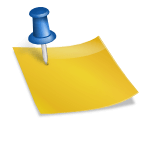Wikis are a great tool for collaborative learning, but like any other tool, they need to be used properly. In my role as wiki administrator/Mister Fix-It at SNL Online, I’ve recently checked up on several course wikis that I’d initially created and turned over to faculty and was disappointed to see some that were underused and poorly structured. Here are a few tips to make your wiki (or, ahem, workspace as PB Works, née PB Wiki, now calls wikis) easier to use and a better learning environment for you and your students.
Have assignments that use the wiki. This would seem self-evident, but unless students have to go to the wiki to do course work that will be assessed, they won’t use it.
Make those assignments appropriate for a wiki. A wiki is not a discussion board. A wiki is a great place to work collaboratively. It’s easy to work on a common document without having to exchange endless iterations of Word documents. It’s easy to post work and share it with others in a highly visual environment. You can post and share photos, audio, video, and a wide variety of multimedia widgets and Web tools–things that are clumsy or impossible to do in a discussion. You can set up private folders for each student, so he or she can post sensitive material like a personal journal that only you and the author can see. But if you want a space for students to discuss things, use the discussion feature in your learning management system.
Provide scaffolding for students. Give them low-stakes tasks to do at the start of the course, like creating a personal introduction page, adding a photo and text to it, and creating a link to it from the course-wiki home page. Again, it should be a required activity, not an optional exercise. Your students can then build on this experience.
Provide clear directions for students. Many adult students are intimidated by new technology, and a surprising number of younger students also struggle with unfamiliar applications. Both groups need to know exactly what you want from them and how to create it. At SNL Online we provide faculty and students with role-based wiki FAQs, print and interactive tutorials, and links to PB Works’ extensive library of video tutorials to help with the “how-to-do-it.”
Provide navigation. The wiki will be underused if it’s hard to use. You need some kind of navigation and site structure. It can be as simple as a list of links on the home page that direct to student pages; the important thing is to make sure that users can easily find what they need.
Provide a template or wiki structure. I’ve set up some wikis for faculty with the course foundation completed; students needed only to edit existing pages or add pages to an existing section or folder. Some of our faculty prefer to create this structure themselves. So far, both approaches have been more successful than leaving the design and creation of the wiki to chance.
Monitor and maintain. Because any user with editing privileges can change any page you don’t lock down, things can (and usually do) frequently appear and disappear. To maintain a consistent, usable learning environment you’ll need to keep an eye on your wiki and make corrections, adjustments, and replacements. Every wiki I’m familiar with sends wiki administrators e-mail alerts when a page is edited; this makes it easy to keep up to date. You can usually set the frequency of these alerts or opt out of them altogether.
Keep ahead of your students. There’s certainly something to be said for you and your students learning as you go along, but with new technology, it’s far more preferable to be comfortable with it yourself before asking your students to use it. Familiarize yourself with the functions and features of your wiki, use all available resources to strengthen your own skill set, and you and your students will create a useful and rewarding collaborative-learning environment.





